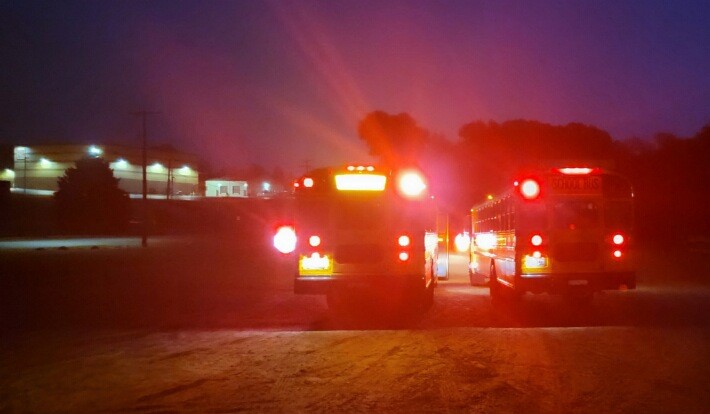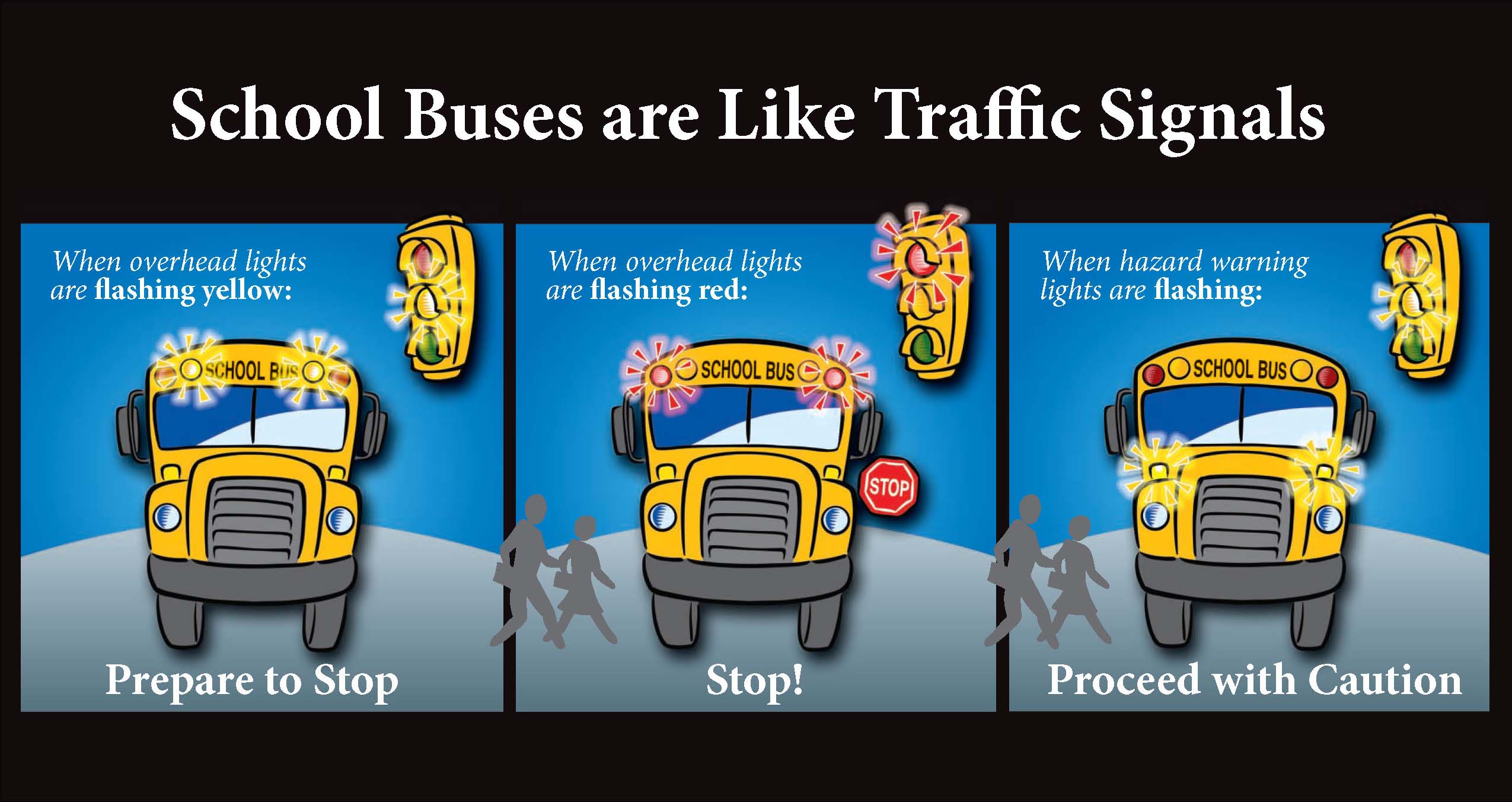

Students must be at their designated stop at least 5 minutes before the scheduled time and visable to the driver. Be sure to allow enough time BEFORE AND AFTER the scheduled stop time until a routine is established. Buses cannot wait for late students. Stop times are approximate and may change without notice due to variables beyond our control.
If your student needs to ride to another location other then their assigned stop, you must call or send a note in with your student to their office to be issued a bus pass. The drivers will not accept notes, text messages or verbal requests from parents. BUS PASS must be issued from the attending school office.
Are bus stops the same every year?
No. While stops are fairly consistent from year to year, changes may be made based on student enrollment.
We live Out-of-District; will my student be transported to school?
Yes, the district will transport your student. However, the location of the stop is based on the amount of space available on the bus. If the Transportation Department verifies there is room on a bus, then it is the parent’s responsibility for transporting the child to/from an existing bus stop every day. No new stops or special arrangements will be made for out-of-district students. If the bus becomes over crowded the out-of- district students will be assigned to an alternative bus stop and or services may be suspended till space allows.
My student’s bus is crowded and overloaded. How will this be corrected?
It is our goal to fully utilize all the space on all the buses in our fleet. The term “overloaded” indicates a bus is filled beyond its rated capacity. An overloaded bus will be corrected by the fourth Wednesday after Labor Day. Students are assigned three (3) to a seat. We appreciate that this may feel crowded to your student; however, it is not a situation which would necessitate correction.
Isn’t the school district required to transport my child?
School districts are NOT required by law to transport regular education children. Michigan Compiled Law (MCL) 380.1321 outlines the obligations of the school district IF its board of education elects to provide transportation. Under Article 3 of the Revised School Code, the school district is obligated to provide for the transportation of a special education student if the Individualized Educational Planning Committee (IEPC) has determined that the transportation is a specialized service which is included within and necessary to carry out the student’s IEP.
My child is starting kindergarten. Will the bus pick my child up in front of my house?
There are no special laws or regulations for transporting regular education students enrolled in kindergarten. If your district provides transportation, it will be provided in accordance with the requirement of MCL 380.1321, Section 55 of the Pupil Transportation Act, and local district policy with regard to the placement of the bus stop.
Is there a law about how far my child has to walk to the bus stop?
No law specifies the maximum distance a student may walk to the bus stop. Buchanan Community Schools board policy establishes walking boundaries. Students living outside those boundaries are offered transportation. A student may have to walk up to one (1) mile to their designated bus stop. Distances may be further for cul-de-sacs, subdivisions, dead-end and one-way roads.
What other factors are involved in establishing where the school bus stops?
There are many factors which should be taken into consideration when school administrators establish the placement of school bus stops. The basic legal factors are spelled out in MCL 257.1855, but the primary concern is visibility of the bus to other traffic and the consideration of stopping distances necessary for other motor vehicles in order to accomplish safe loading and unloading of the children. In general, state law requires 400 feet of clear and continuous visibility on a highway or roadway where the speed limit is more than 35 miles per hour, and 200 feet where the speed limit is less than 35 miles per hour. There is no state law which specifies a maximum distance between stops.
What about the safety of my child getting to and from the bus stop? There are no sidewalks where we live and it’s not very safe walking on the busy road we live on.
It is the responsibility of the parent or legal guardian to see that a child gets safely to and from the bus stop. The school district provides transportation as a non-mandated service and establishes placement of the bus stops in accordance with the requirements of the law.
Transportation Supervisor
Administrative Assistant
Please email any transportation changes or issues here.







MCL 257.682 MICHIGAN VEHICLE CODE (EXCERPT) Act 300 of 1949
There are blind spots where a bus driver can lose sight of a child:
The PDF below is a graphical representation of the process followed by the District in the event of a closure or delay related to school transportation. If you are unable to view this PDF, you may contact the Transportation Office for more information.
Central Offices
401 W Chicago St
Buchanan MI 49107
©
: Buchanan Community Schools. All Rights Reserved
To report issues with this sites accessibility, email the webmaster.